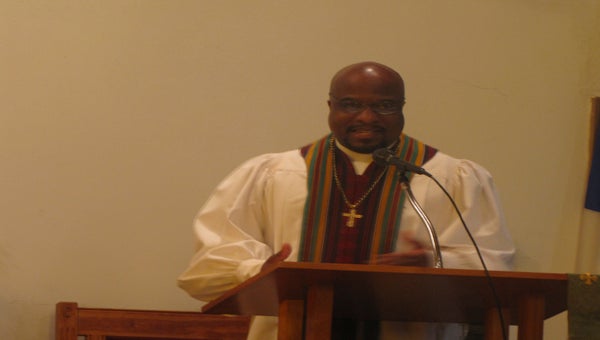History of reform
Published 3:46 pm Monday, September 24, 2012

The Reverend Michael Johnson of Faith Lutheran Church in Mobile was the guest speaker at Ebenezer Lutheran's 87th Anniversary.
Amidst a roof of sturdy wood and new, gold-tinted stained glass windows surrounded by biblical portraits and adornments, Ebenezer Lutheran Church has many stories not often heard from 87 years of existence in Atmore.
“I probably couldn’t tell you everything in one evening,” the Reverend Benjamin F. Stallworth said. “A lot of people probably don’t even know it.”
One of the church’s most significant moments might have come during one of Atmore’s darkest hours.
“This church and its pastor reflected the Civil Rights Era more so than any other church of the time because there was a white pastor,” Stallworth said. “That must have been some example for people to follow at that time because you had a black congregation and a white pastor.”
One of Ebenezer’s longest serving members confirms that when he first began attending services in 1966, mingling among different races was not something commonly seen in Atmore.
“It was a lot of segregation here in a small town,” Rufus McCallum said. “It’s come a long way since that particular time.”
Although the word is now tossed around casually like yesterday’s garbage, the pastor at that time was known for being an evangelical. He was evangelical in the activist sense as defined by contemporary historian David Bebbington. Bebbington saw this type of evangelism as an expression of the Gospel through social reform. The pastor did not have a car and preferred to walk everywhere he went to be among people.
“Everybody knew him and everybody loved him,” Stallworth said.
The Lutheran church’s involvement with predominantly black congregations extends further back than the Civil Rights Era, however.
“The Lutheran church did mission work with blacks and that’s the most phenomenal thing,” Stallworth said. “I think the Lutheran Church has touched a lot of lives.”
Rosa J. Young was referred to the Lutheran church by Booker T. Washington. According to the writings of Young, Washington told her the Lutheran church was doing more for people of color than any other denomination he knew of. Young played a key role in the founding of Lutheran schools and congregations across Alabama’s Black Belt. In 1922, she helped found Concordia College, a school designed to educate and train future black Lutheran pastors and educators.
Ebenezer Lutheran Church began not long after. According to the church’s written history, eighteen people gathered in the home of Henry McCants and Jack Montgomery on May 28, 1925 to celebrate communion and witness the baptism of W.C. Peavy, representing the church’s first unofficial service. In the same year, the church began what was, according to the Anniversary Chairperson Virgie McCallum, the first Christian Day School in Atmore.
The school taught students from the elementary levels through the eighth grade. According to Stallworth, the local public schools weren’t as high-caliber as the schools of today and more importantly for those in the church, the schools didn’t teach values.
“A lot of the folks came through the school back then,” Stallworth said. “This church has probably touched a lot of people’s lives.”
While originally from Hattiesburg, Miss., Rufus McCallum moved to Atmore at the age of 15. He grew up attending services of the Baptist Church, but around the age of 26 he became a Lutheran.
“We started off the best school around to learn religion, arithmetic, and writing,” McCallum said. “[Students] left here knowing the Lord’s Prayer.”
The current building housing the congregation, constructed in 1964, was an upgrade from the original building. The school outdated the current building, but classes at the school were discontinued in 1993.
However, in 1989 the church opened a center at Concordia College in Selma, the same school started by Young in 1922. In 1992, 14 students graduated from the Atmore Center with Associates of Arts degrees.
Stallworth first began serving Ebenezer in January 2004. He was officially installed on March 26, 2006. Three members were confirmed by Stallworth in 2011, and he oversaw two new members joining the congregation within the past two months.
Despite the church’s long history, it is no different than many other churches struggling to find younger people who will take active roles in the church. For Stallworth, the best way to try to get such involvement is developing programs that will appeal to young people, simply inviting people to church, and holding vacation bible school.
”I’ve seen some progress, but I’ve seen a lot of older people pass on. So, now it’s a newer generation,” Stallworth said. “We want to reach out to young people. I think that’s one of the struggles we have right now. It’s not as easy as it was.”
Despite the struggles of both yesterday and today, the congregation at Ebenezer Lutheran and its leadership seems to be on track for an even stronger future over the next 87 years.

